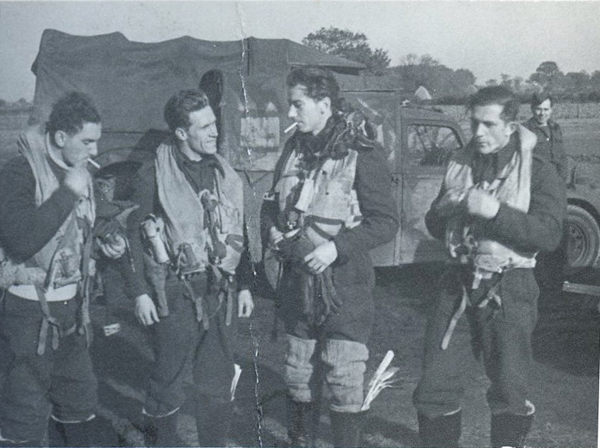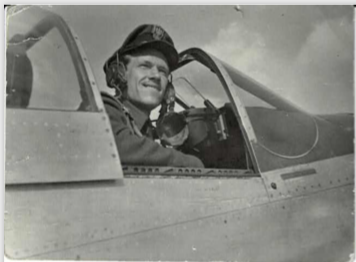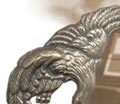 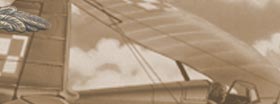  |
|||||||||||||||||||||||||||||||||||||||||||||||||||||||||||||||||||||||||||||||||||||||||||||||||||||||||||
|
|
On embarkation, worn-torn Liverpool may have looked like a scene from many other cities in war-torn Europe after heavy bombing. He would have been
issued a rail-warrant to Blackpool and the start of the next phase in his ambition to join the Polish Air Force (PAF).
His “registration” in the UK was probably at the Goodwood Hotel, Hornby Road, Blackpool where the “lads” were sent before being posted to the
various ‘stations’. Here all personnel would undergo a debriefing and ‘screening’ by Polish Intelligence for infiltration by both German and Soviet agents. In
his interview he recorded his crossing the frontier into Slovakia on 17th May 1940 with the intention of entering Hungary and then on to France. He confirmed he
was in Hungary from 22nd May 1940 until 7th January 1941. He confirmed he had been stopped at the border and interned after interrogation by two policemen.
He confirmed he stayed in a number of locations in Hungary, initially Mátraszólós where he was interned in a camp. He was then transferred to a camp at
Nagykanizsa and then Keszthely before completing his studies at Balaton-Boglar. Here he admitted the study programme and physical fitness regime was quite
tough, but was useful in pre-preparation for the armed services. His statement also shows he was in hospital at Laszlo (?) for treatment.
Zenon was also interrogated about his knowledge of his uncle Waclaw Krzeptowski whose treason was well known through the creation of Goralenvolk political
party. He confirmed that while in Hungary many people were very sympathetic towards the young displaced Poles. He told the interrogators that while in Hungary
he observed numerous large transports to Russian, Romanian and Italian fronts where there were few tanks. He suggested some Hungarian units were using old
equipment, some dating back to the First World War. He confirmed he enlisted into the Polish Land Forces in Haifa, Palestine on 13th February 1941 until 28th
October 1941 as a Private in the Carpathian Rifle Brigade. On 29th October 1941 he was posted to the Polish Air Force Headquarters in Palestine.
Having completed his debriefing he was officially posted to the Polish Air Force Depot based in Blackpool and RAF Station Kirkham until 13th February 1942.
On 14th February 1942 he arrived at the Aircrew Training Wing, RAF Station Hucknall for one month of training. He was then posted to No.12 Initial Training
Wing, RAF St. Andrews until 17th May 1942. It was not until his return to No.25 Polish Elementary Flying Training School at RAF Hucknall that Zenon got to
fly Tiger Moths over the Nottinghamshire countryside. On 19th August 1942 until 25th January 1943 he was with No.16 Polish Secondary Flying Training School
at RAF Newton just 7 miles East of Nottingham. Here Zenon flew Harvard 11b’s in the preparation for flying fighter aircraft. He returned to the Polish Air Force
Depot at Blackpool for a month before being posted to No. 41 Operational Training Unit (OTU) at Hawarden where he would have been introduced to
operational tactics using Harvard’s’ as the ‘trainer’. The next stage of his training was more frustrating than possibly anything else in his war to date. From 21st
August 1943 until the 14th February 1944 he was returned to the Polish Air Force Depot at Blackpool before being transferred to Kirkcaldy for a Polish Army
Cadet course at Burnt Island, which lasted until 11th November 1943.
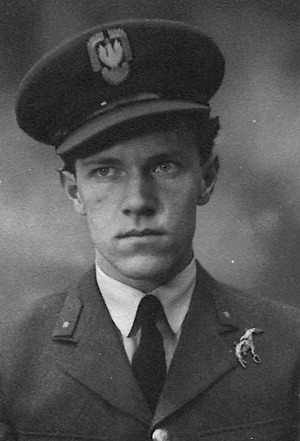
ZW Krzeptowski
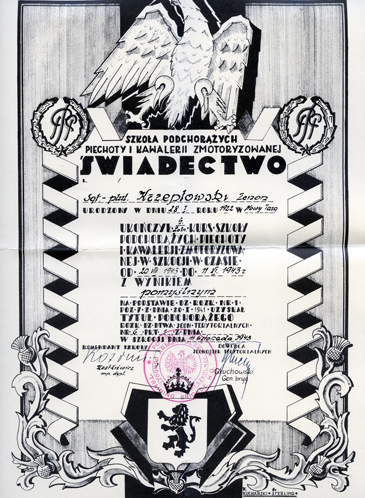
On 1st January 1944 Zenon was commissioned as the rank of Pilot Officer. Zenon was returned to No.41 OTU from 14th February 1944 until 20th March 1944 where his flying skills were being ‘honed’ prior to his transfer to No. 61 OTU at RAF Rednal in Shropshire where he got his hands on his first ‘Spit’. Here his training was for conversion to the Spitfire Mk V in preparation for operational flying, but not before being sent to No. 3501 Signals Unit for 3 weeks to brush up his W/T skills before joining the 303 Squadron.
|
||||||||||||||||||||||||||||||||||||||||||||||||||||||||||||||||||||||||||||||||||||||||||||||||||||||||||
|
|
|
|
| BL464 | F/Lt | Szelestowaki, M |
| W3411 | W/O | Sznapka, W |
| BL630 | F/O | Maksymowicz, M |
| AB921 | F/O | Swietlikowski, L |
| AB921 | F/Sgt | Mermel, K |
| BW156 | Sgt | Dworski, B |
| AD247 | F/O | Zdanowski, S |
| W3373 | F/O | Borkowski, K |
| BL651 | F/Lt | Rzyski, T |
| W3373 | W/O | Górecki, R |
| AD247 | F/Sgt | Pasek, W |
| AA751 | W/O | Schidt, G |
| BM156 | Sgt | Wierchowicz, J |
| EE622 | F/O | Herbst, W |
| EB411 | W/O | Schmidt, G |
| AA751 | F/Sgt | Nowinski, Z |
| BL630 | F/Sgt | Taler, J |
| BM529 | F/Lt | Stasik, J |
The weather curtailed further operational flying for the next 3 days with training flights being restarted once the weather started to clear. For the next seventeen days Zenon was keen to scratch any opportunity to get in training flights’ as there was limited operational activity. The Squadron had received Spitfires Mk IXF 18th July 1944 to replace the Mk VB’s. These were handed over RAF No.130 Squadron. Zenon managed to get in an hour of local flying in his new plane (MH692) on the 19th July and an hour’s formation flying with the Squadron on 23rd July (EN122). However, the operational logbook also shows there were a number of minor accidents while landing the new aircraft with the pilots concerned reporting how they had managed to bend valuable fighter planes.
On 25th July 1944 (D + 48) the Zenon took off at 13.25 (BS286) on a sunny almost cloudless day with the weather 2/10 slight cloud and visibility 20 miles. The Ramrod (1130) was close fighter escort for 36 Mitchells sent to bomb a target 6 miles north of Châteaudun, which is located about 90Km East of Le Mans. Squadron Leader Koc, DFC, led ten Spitfires Mk IXF and was over the target by 14.35. The report shows the bombing was well concentrated S/E of a wood position. Heavy flak 8 miles south of Trouville/ Pont L’Eveque which is sandwiched between Le Havre and Rouen, was the only major concern otherwise, the flight was recorded as uneventful. The logbook shows two aircraft collided on take off with pilots being sent the necessary paperwork to explain how the ‘pranged’ their planes.
Next day (D + 49) Zenon was again operational with a Ramrod (1132) operation. Again the 303 Squadron was providing close fighter escort for Mitchells designated to bomb a P.O.L dump at Alencon. Twelve Spitfires Mk IXF were led by Squadron Leader Koc, DFC and left the base at 09.25 and arrived over the target at 10.27. Six aircraft were forced to return to base just after take-off due to the poor weather. The Mitchells dropped their bombs over the NE corner of the town and again the heavy and accurate flak from batteries located 8 miles south of Trouville had affected the flight. The weather over France was 6/10 at 14,000ft with visibility being hazy to good, but despite this the Operational Controller ordered the flight to land in France with one casualty – F/Sgt Talar’s plane had been damaged during the mission.
On the 27th July 1944 (D + 51) Ramrod (1134) was sent out to sweep the Rouen area in N. France. Twelve Spitfires IXF led by Wing Commander Checketts, DSO; DFC took off at 19.05 and was over the target at 19.45. They ran into over twenty Thunderbolts circling over Formerie, which is located halfway between Dieppe and Amiens. They returned to Merston via St. Valery in conditions that had 8/10 clouds up to 12,000ft with good visibility above the cloud. The flight was recorded as uneventful.
After a short respite, Zenon was in action on 31st July 1944 (D + 55) on another Ramrod operation (1146). The operation was to cover Lancaster bombers withdrawal after a raid on the marshalling yards at Joigny. The bombing had been highly concentrated over the target, which was covered in slight haze. The flight consisted of 12 Spitfires Mk IXF led by Squadron Leader Koc, DFC and took off at 19.11. Once over target at 20.27 they were ordered to land in France at B.9 at 21.50 due to bad weather. The planes returned to Merston on 1st August at 16.03.
In the month of July 1944 the squadron had flown 468.45 operational hours including 22.4 hours of night operational flying with a further 183.45 hours of training in the newly delivered IXF’s.
On the 1st August 1944 the outbreak of the Warsaw Uprising shook the pilots of 303 Squadron. For the next 63 days the frustration and anger over the wholesale slaughter of 40,000 fighters and destruction of Warsaw remained in the imagination of the whole of the Polish forces in exile. On behalf of the whole Squadron, all of the 303 Squadron signed a letter to the King of England (dated 14th August) begging for greater British intervention as so many had done so much for the defence of British Sovereignty.
Pilot Officer Zenon Krzeptowski’s first action in August 1944 was another Ramrod operation (1154) on 3rd August (D + 58) escorting Lancaster’s bomb Trossy St. Maxim. Twelve Spitfires IXF led by Wing Commander Checketts, D.S.O; D.F.C took off at 13.10 and were over the target by 14.45 with intense high flak aimed at the bombers all the way in. The bombing was very concentrated and observers reported sighting of more than twenty-five enemy aircraft 25 miles N.W of Paris at 30,000ft. None were seen and the flight returned to base at 15.13.
As soon as he landed, Zenon was rostered for another Ramrod operation (1156). Twelve Spitfires Mk IXF were led by Squadron Leader T. Koc, DFC and left the base at19.40 to escort 24 Mitchells to bomb the marshalling yards at Abancourt 70km N.E of Rouen. The bombers were subjected to heavy, but inaccurate flak from a location 18 miles north of the target. The bombing was accurate with good weather conditions of 6/10 clouds at 10,000ft with visibility for 25 miles. Returned to base at 21.13.
After a night’s sleep Zenon was in action again. Ramrod (1157) took off on 4th August 1944 (D + 59) at 10.19 to cover Lancasters’ bombing the railway bridge at Ataples, near Le Touquet. Again, led by led by Squadron Leader Koc, DFC the Twelve Spitfires Mk IXF observed an excellent bombing run on the bridge and railway lines on each side with light to heavy flak over the target. Landed back at Merston at 12.10. These activities were targeting strategic centres to cause maximum damage to German supply-lines.
On 6th August 1944 303 Squadron were on shipping patrols in the English Channel. Five sections comprising of 4 Spitfires Mk IXF were to cover from 08.51 to 14.24. At 10.20 Warrant Officer R. Górecki (flying MN777) sighted a submarine just below the surface while flying 1,000ft above the water. The submarine was trying to head off a convoy which was located at 5005°N by 0145°W. Blue section dived to warn the convoy of a submarine in the vicinity, but visual contact was temporarily lost. Red Section led by Warrant Officer S. Lewicki (in BS543) saw the submarine at 10.15 on the surface still heading north towards the unescorted convoy. Zenon took off at 10.45 in MA844 and landed without further incident at 12.50. The weather was hazy on the surface with 4/10 cloud in patches to 15,000ft with a calm sea and good visibility. The non-operational pilots were engaged in air to sea firing practice, photo reconnaissance, cross country navigation practice, plane tests and F/Sgt M. Michalak managed to practice aerobatics.
On the 7th August 1944 (D + 62) 303 Squadron were back on Ramrod Operations (1175). Twelve Spitfires Mk IXF were led by Squadron Leader T. Koc, DFC and left the base at 16.51 for close escort to Bostons’ bombing La Folletiere, about 27km N.W of Rouen. The bombing was accurate with heavy flak in the area particularly in the Point Le Evegue to St. Julien area. Some Spitfires were also carrying out photo-reconnaissance and landed safely back at 18.15. The weather was 8/10 clouds at 15,000ft with good visibility. These strikes were behind enemy lines to support the breakout of the D-Day army through the Falaise Gap.
On the 9th August at 09.30 303 Squadron were ordered to leave Merston for Westhampnett, near Winchester and adjacent to Tangmere with 6303 Squadron servicing echelon assisting in the move. The planes flew out at 15.00 and the last landing at 16.50 with F/Sgt J. Taler crash landing. Westhampnett, like Merston was prone to water-logging and despite its war-time role and successive use by various squadrons flying Spitfires, the operations from the airfield were restricted. Air Vice Marshall Basil Embry attempted to land a Mosquito to test the airfields ability to be used as a forward base to cover the Normandy campaign – it was deemed to be too tight.
On the 10th August 1944 (D + 65) P/O Krzeptowski was on another Ramrod mission (1183) to cover 60 Lancasters’ on a ‘Noball’ bombing mission to the Hesdin/ Fruges area, which is sandwiched between Le Touquet and Lens in Northern France. Twelve Spitfires IXF led by Wing Commander Checketts, DSO; DFC took off from Westhampnett at 11.40 and were over the target at 12.15. The bombing results were not seen due to the 10/10 cloud topping at 7,000ft. On the return it was reported heavy flak in the Hardelot area, which is between Le Touquet and Boulogne-sur-Mer. Zenon landed after an uneventful flight at 14.00. On the ground the Polish 1st Armoured Division was fighting the Germans around Caen while Warsaw fought on and the 1st Polish Army was fighting for the Warka-Magnuszew bridgehead in support of the Soviet Army.
The following day some of 303 Squadron led by Ft/Lt J. Stasik escorted a Mitchell bomber carrying Allied Supreme Commander General Dwight Eisenhower as a passenger to Airfield A9 in Normandy to inspect the forces and the allied progress on the ground. The others involved were W/O S. Lewicki (in BS534), F/O H. Borkowski (MA814) and F/Sgt S. Iwanowski (MA763). All were back at base by 18.45.
On the 13th August 1944 (D + 68) Zenon was on duty for another Ramrod mission (1194) to patrol the Nogent/ Evreux area to the East of Paris. Twelve Spitfires IXF led by Wing Commander Checketts, DSO; DFC took off from Westhampnett at 09.20. Zenon was flying MH910 and the flight arrived at 10.10 with the patrol flying over the area at 16,000ft. At 10.40 demolition explosions were seen and 3 Spitfires led by F/Lt J. Stasik (the other pilots were F/O S. Zdanowski and F/Sgt H. Mermel) attacked a military bus leaving it smoking on the road. The flight returned and landed at 11.30 with one plane landing at Airfield B.10 in France with engine trouble.
On the 15th August Zenon was on non-operational duties and flew with 12 Spitfires Mk IXF to Coltishall, near Norwich, Norfolk. They took off at 06.45 and landed at 07.45 with no incident. The rest of the squadron were on operational or training duties and Zenon was ordered back to Westhampnett leaving Coltishall at 11.10 and landed at 13.10. For the next few days the Squadron remained on active duty with the weather closing all operations on the 17th August.
On the 18th August 1944 (D + 73) Zenon was on operational duty with a Ramrod mission (1214) to provide close fighter escort to 36 Bostons’ on a bombing ammunition dumps at Beaumont-sur- Oise approximately 26 Km North of Paris. Twelve Spitfires IXF led by Wing Commander Checketts, DSO; DFC took off from Westhampnett at 11.31 and over target by 12.40. The bombs straddled the river near Chaumont and it is not clear how effective this part of the mission was. The Blue Section broke away to attack motor transport on the roads near a house occupied by a French family who were visible to the fighter pilots. They started the attack from 13,500ft at 390mph and were ordered to abort. As they climbed out at 6,500ft to rejoin the group the section of F/O H. Borkowski broke off as he disappeared into cloud. The plane first spun, then broke up before impact. The pilot was not seen to bail out and was presumed dead (PRO/AIR27/1666). On returning to base F/Lt T. Rzyski (in Mk IXF MI216) landed and making way for another aircraft hit a trolley with a drop tank on it.
On the 19th August 1944 there was no operational flying due to poor visibility and we can only surmise they spent time reflecting upon the loss of a comrade. On the ground, the 1st Armoured Division were in action around Chambois with the 2nd Polish Corps in Italy breaking up the German defences on the Matauro River before reaching Pesaro.
On the 20th August 1944 (D +75) with the weather clearing, Zenon was on convoy patrol over the English Channel. One Section of 2 Spitfires Mk IXF, which included Zenon with F/Lt S. Knigrodzki left at 15.10 and patrolled as far as Cherbourg. The weather was cloud 8/10 between 8 – 10,000ft with good visibility. They landed without incident at 16.40.
The following day, all flying was cancelled due to poor visibility and weather.
On 22nd August 1944 (D + 77) the 303 Squadron received new pilots to replenish the loss of F/Lt. I Olszewski, F/O Swietlikowski, W/O W. Karasinski, W/O G. Schmidt and F/O J. Oksiak whom had been posted to 84 G.S.U for flying duties. W/O Z. Bartoszuk, F/Sgt K. Przeciszowski, F/Sgt S. Celak, F/Sgt W. Skrzydlo, F/Sgt H. Szczurowski, Sgt. A. Wierzejski and Sgt. K. Sztuka had all been transferred from 61 O.T.U based in Rednal just outside Birmingham where they had originally completed their training on Spitfires. There was no operational flying due to poor weather.
On the 23rd August 1944 (D + 77) Zenon was in action. The Wing were on a Rodeo (393) mission to sweep and engage enemy fighters. The target was the area was an arc between Beauvais-Criel to Roye-Amy (?) just north of Paris. Twelve Spitfires Mk IXF were led by Squadron Leader T. Koc, DFC left Westhampnett at 19.00. Although described in the logbook as ‘uneventful’, they did experience heavy flack around the Ault area, just north of Dieppe. While over Rouen at 20.20 they reported sighting 50 heavy transporters on the St. Martin to Rouen road. The Wing landed at 21.00 having flown through weather recorded as cloud 10/10 at 10,000ft with some rain.
From late August until mid September 1944 Zenon practiced local flying or was on leave. Operations continued with Ramrod operations in N. France ranging from Paris – Laon or up the coast for photoreconnaissance as far as Ostend.
Unsettled weather on 2nd September 1944 hampered operational and non-operational flying. However, the next day Zenon practiced formation flying with F/Sgt S. Celak taking off at 10.30 in BM252 and returned at 11.35. At 14.15 the Wing took off with Wing Commander Checketts, DSO, DFC for Manston just outside Margate, Kent. Again, on the 5th September Zenon was on no-operational duties practicing formation flying locally with F/Sgt. L. Przeciszowski from 11.50 until 12.55. Some of the Wing was sent to Manston again for training flights. The rest of the Squadron were involved in escort duties or photoreconnaissance missions which were taking them over Belgium, Holland and SE. Germany. Again, on the 10th September, Zenon was on non-operational training flights, the first to Thorney Island and then aircraft checks. On 12th September he was with the Wing doing an out and return from Bradwell, near Braintree, Essex followed up by aircraft checks. These flights typically lasted between 30 minutes to just over an hour. On the 13th and 14th September, it was much the same routine, but this time with a flight to Manston in Kent or formation flying. In the afternoon of the 14th, the Wing did an out and return to Coltishall in Norfolk.
This pattern of non-operational flying was broken on the 15th September 1944 (D + 101) with a Ramrod mission (1284) to provide close fighter escort for 24 Mitchells and 24 Bostons’ to bomb ferries in Bresken and Elleswoutsdijk in Holland. Wing Commander Checketts, DSO, led nine Spitfires Mk IXF; DFC and they had landed for refuelling at Coltishall, Norfolk for extra duration. They left at 11.20 and were over the target at 12.00 and then returned to Westhampnett. The weather was cloud 8/ 10 top at 7,000ft which obscured the results of the bombing.
On the 17th September 1944 (D + 103) saw 303 Squadron support Operation Market Garden. Their mission was to provide escort and anti-flak patrols for the airborne forces, which consisted of 126 Dakotas, 1200 tugs with gliders forming a continuous stream between 1,500 and 2,500ft at 120 to 124 mph. Ten Spitfires Mk IXF were led by Wing Commander Checketts, DSO; DFC and left Manston 13.02 and were over the target between 14.00 and 15.10 and landed back at Westhampnett 16.15 with all going to plan and no encounter with enemy flak. From their position they could see the concentration of gliders and paratroops 10 miles N.E of Eindhoven. The weather had been 5/ 10 cloud on the coast and 10/10 over the target at 5-6,000ft. Two aircraft crashed at Manston for refuelling without any major injury to the pilots, only bent airframes.
The following day, the other Wing in 303 Squadron took up their duties for Market Garden providing fighter escort for 270 Liberators dropping supplies. The flak was accurate and intense making the operation more hazardous than the previous day as they were flying low along the route and with the haze made it difficult to pinpoint targets. F/Sgt S. Dworski was hit by flak and was killed after he could not recover from the dive at 700ft with the plane crashing 8 miles S.W Rosendaal (?). Flak ships off the Dutch Coast also made the return trip difficult. Zenon was on non-operational duty and returned from Manston. The next day he returned to Manston to prepare for his next ‘sortie’ over Market Garden.
On 20th September 1944 (D + 106) Zenon was back in action. Their operation over Market Garden was to provide close fighter escort and neutralize the flak to 67 Sterlings. Seven Spitfires Mk IXF were led by Wing Commander Checketts, DSO; DFC and left Manston at 12.50 and were over the target at 14.10. Due to thick haze up to 5,000ft, the visibility was very poor but the intelligence report indicated the supplies were dropped over the target by the bombers diving through to drop from a lower altitude. Although the flight had gone to plan F/O W. Herbst was hit by flak and bailed out over the Calais – St. Malo area. Reported as ‘Not yet returned’.
On the 21st August 303 continued with their air support roles over Market Garden or Ramrod operations. On the 24th September the order came though for the 303 Squadron to move to Coltishall, Norfolk. The 6303 servicing echelon and ground staff arranged for the Squadron, not flying planes to take the train from Chichester to London and then up to Norwich with local transport to the airfield arriving at 21.30. Squadron Leader T. Koc, DFC was transferred to 61 O.T.U at Rednal for C.F.I duties. F/Lt. Szapósznikow recorded in the Operational Logbook that the 303 Squadron had flown 417.15 operational hours, 215.05 training hours on IXF’s and 65.15 hours on VB’s in the month of September 1944 while at Westhampnett.
On the 30th September 1944 (D +116) Zenon’s section was allocated to Big Ben Patrols where three sections of two Spitfires Mk IXF carried out patrols of one-hour duration each trying to spot VI activity off the Dutch coast. P/O Z. Krzeptowski in MA420 was paired with Sgt. J. Wierchowicz (in MA763) set off at 16.45 and returned 19.30 without incident.
On the 1st October 1944 (D + 117) 303 Squadron were introduced and briefed by their new Intelligence Officer F/O J. Nicholls who had been assigned to the Squadron. F/O W. Herbst had completed at ‘tour of duty’ and returned to the Polish Air Force Depot at Blackpool and then onto RAF Kirkham. The Section had been briefed for their Big Ben patrols off the Dutch Coast. Six ‘Sections’ of Spitfires Mk IXF started their operation at 08.30. Zenon’s flight took off at 09.00 and returned at 11.10 and patrolled with Sgt. J. Wierchowicz. At 14.45 Zenon with Sgt. J. Kukuc took off for an interception flight to locate 11 M.T.B’s (most likely based at Lowestoft in Suffolk) and after a sweep of the North Sea were located within 60 miles from base. Zenon took command of the flight and reported the location of the M.T.B’s to the controller. Operations for the day closed at 15.20 with 6 Sections being in operation throughout the day. The weather was cloud 5/10 base at 4,000ft with good visibility.
On 2nd October 1944 Squadron Leader B. H. Drobinski, D.F.C took command of the Squadron. Coltishall had been built with the original intention of being a bomber airfield, but the outbreak of war saw it converted to fighter use by various squadrons prior to 303’s arrival. For Squadron Leader B. H. Drobinski, D.F.C, the location was purpose built, modern by previous standards with operations being assisted by Neatishead Radar.
On the 3rd October 1944 (D + 119) Zenon’s Section took off for a Big Ben patrol at 14.05 with about an hour over target area and they returned at 16.20 with nothing to report. Accompanied by Sgt. J. Knicik they headed off for the Dutch Coast and returned at 16.20. The weather was recorded as cloud 5/10 with base at 4,000ft and good visibility.
On the 4th October 1944 (D + 120) Zenon’s Section was designated a Big Ben patrol and took off from Coltishall in MA844 at 15.25 with Sgt. J Knicik (in MA694) for the Dutch Coast. Again after about an hour the section returned to base with nothing to report. F/Lt. S. Szpakowicz arrived having been transferred from 316 Squadron and reported for operational duties.
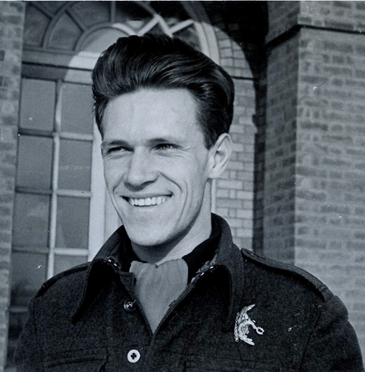
Again the next day (D + 121) Zenon led the first (Yellow) Section off on a Big Ben patrol on the Dutch Coast. Flying in MA844 with Sgt. J. Knicik they left at 07.40. While over Rotterdam they reported a white cone shape in the sky at 40,000ft S.E to the city. The logbook shows Yellow Section Leader, Z. Krzeptowski reporting the incident at 11.33 while flying at 23,000ft N.W of The Hague then the V2 disappeared after 20 seconds. An unidentified aircraft was seen circulating over the Walcheren Islands at 30,000ft. The Yellow Section landed safely without further incident and was back at base by 09.45. Yellow section made another ‘sorties at 10.50, this time Zenon was accompanied by Sgt. L. Bisanz (in BS463) and returned without incident at 12.45. Weather had been 2/10 cumulus base 3,000ft with top at 10,000ft with good visibility.
303 Squadron Nominal Roll of Pilots 5th October 1944
Commanding Officer: S/Ldr B.H Drobinski
|
|
|
| F/Lt E. Szaposznikow | F/Lt S. Socha |
| F/Lt M. Szelestowski | F/Lt S. Kedzierski |
| F/Lt S. Szpakowicz | F/Lt T. Rzyski |
| F/Lt A. Malarowski | F/Lt L. Kraszewski |
| F/Lt Z. Zmigrodzki | F/O M. Maksymowicz |
| P/O Z. Krzeptowski | F/Lt J. Franckiewicz |
| F/Lt E. Bartys | |
| W/O A. Rutecki | W/O S. Lewicki |
| W/O W. Sznapka | F/S M. Michalak |
| Sgt J. Wierchowicz | Sgt K. Prusam |
| Sgt K. Sztuka | F/Sgt W. Skrzydlo |
| Sgt J. Kmicik | Sgt J. Janicki |
| Sgt J. Kukuc | Sgt K. Stankiewicz |
| Sgt L. Bisanz | Sgt A. Benski |
Ground Staff
| F/Lt J. Jasinski | Adjutant |
| F/Lt W. Galuszka | Medical Officer |
| F/O J. Nicholls | Intelligence Officer (RAF) |
| Sgt. S. Suwinski | Fitter |
| Cpl K. Stankowski | Clerk |
| AC1 K. Wegrzecki | Clerk |
On the 7th October 1944 (D + 123) Nine Spitfires Mk IXF led by F/Lt. Kedzierski set off at 06.20 on a Ranger Mission (No.52). F/Lt Z. Zmigrodzki with Zenon, Sgt. J. Wierchowicz, and Sgt. L Bisanz making up the sortie’s members led blue Section. Blue Section sighted two goods trains south of Leeuwarden. One was on the mainline and the other in marshalling yards. Also there was a passenger train S.E of Leuwarden. Blue Section thought the other s ection would attack the goods trains. Two aircraft from the Blue Section each attacked the passenger train twice with the train stopping on the tracks after the first attack. A quantity of white smoke was seen from the train and small light flak was sent up from the train’s tender. These attacks typically started at 6,000ft and would pull out at around 500 – 1,000ft above the ground. Blue Section returned to base and landed at 09.05. The other Section returned to base and on the return leg reported sighting three ships of between 3-4,000 tons and fourteen smaller vessels in Den Helder.
On landing, Blue Sections planes were refuelled, rearmed and prepared for a Ramrod mission to escort Lancaster and Halifax bombers to Cleeve (?), in Holland. Ten Spitfires Mk IXF led by F/Lt. K. Szaposznikow; DFM took off at 12.50 from Coltishall. The intelligence reports show it was difficult to assess the effectiveness of the mission, however, thick smoke rising to 4,000ft was sighted. The Section remained over the target area for another 18 minutes flying at 14,000 feet and sighted no enemy aircraft in the vicinity. There was heavy and intense flak over the target area up to 18,000ft with one Halifax taking a direct hit and disintegrated with 10 parachutes seen. On the return there was medium - heavy and inaccurate flak over the coast. The Spitfires landed at 15.10. The weather was cloud 5/10 at 16,000ft with very good visibility despite ground mist.
On 9th October 1944 (D + 125) Zenon started the day off at 10.50 for an hour and a half of Squadron formation flying. On landing his plane it was refuelled and armed in preparation for a Big Ben patrol off the Dutch Coast. F/L Malarowski led three Sections of 2 Spitfires Mk IXF. Zenon (in BS465) with F/Lt. M Szelestowski (in BS281) took off at as Red Section at 12.40 for a patrol, which was to last three hours and returned to base 14.55. They had seen vapour trails at 13.45 while flying at 20,000ft with the other Section reporting sightings which were lost at 25,000ft otherwise there was little to report. The weather over Holland was cloud 8-10/ 10 tops 6 – 7,000ft with visibility 10 miles.
The next day, Zenon had a gentler day broken by forty minutes of local flying in the mid-afternoon.
On the 11th October 1944 (D + 127) a Ranger patrol had been organised to fly between Texel, Leeuwarden, Leer, (Dutch - German Border) Lathen and out via Egmond in Holland. Eight Spitfires Mk IXF led by F/Lt S. Kedzierski took off at 11.25. The flight returned without incident at 13.25 due to mist and cloud at the base of the target area with 10/ 10 cloud with tops at 6,000ft. Through mist they had seen eight small fishing vessels in the North Sea at 0545° E 5235° N lying East to West.
From 11th to 24th October Zenon was either on non-operational duties and spent some flying time with the Squadron practicing formation flying, or, resting while the rest of the Squadron continued with Ranger, Big Ben, Armed Reconnaissance and Ramrod operations or assisting in Air-Sea rescue missions. In the month of October ’44 the 303 Squadron had notched up while at Coltishall 448.25 operational hours and 140.45 training hours with no night-time activity.
On 1st November 1944 Zenon was back on non-operational duties after some R&R with an aircraft test on a Spitfire Mk IXF (No. MH694) for a flight that lasted only 20 minutes during the mid-morning.
On 4th November 1944 (D +151) an Armed Reconnaissance consisting of four Spitfires Mk IXF and led by F/Lt. S. Kedzierski took off at 08.40 and crossed the Dutch coast at 11,000ft near Westhoofd and then turned North towards Haarlem, then South to Rotterdam and then North and out at Egmond on the coast. Only one large merchant ship of approximately 6,000 tons and 6 small ships carrying barrage balloons were seen at Ijmuiden. The weather over Ijmuiden was reported as clear with good visibility with 8/ 10 cumulus with base at 2-3,000ft. The planes landed at 10.45.
The next day the weather had deteriorated and there was no operational flying.
On 6th November 1944 (D + 153) Zenon was again on an Armed Reconnaissance consisting of four Spitfires Mk IXF and led by F/Lt. S. Kedzierski took off at 10.45 and crossed at Ijmuiden at 10,000ft and then turned South to Rotterdam, north to The Hague and then altered course east towards Utrecht. At Utrecht the Section turned West towards Rotterdam and out over the coast at The Hague. They were patrolling at 7,000ft with no targets to attack but they were subject to light accurate and intense flak from the Hook of Holland. Weather over the target was cloud 5/ 10 with base 3,000ft topping out at 10,000ft. Although the visibility was good, there was some slight rain. They landed back at Coltishall at 12.45. On this flight Zenon had been paired with Sgt. L. Bisanz.
7th November 1944 (D + 154) Zenon was another Armed Reconnaissance consisting of four Spitfires Mk IXF and led by F/Lt. A. Malarowski. They took off at 15.30 and this was the second flight led by F/Lt. A. Malarowski that day. They crossed over the target area at 10,000ft near Ijmuiden just above the clouds. They turned towards Arnhem and flew through cloud at 5,000ft and then flew below the cloud over Rotterdam, then turned south towards Westhoofd (?). Light accurate flak had been sent up over Gorinchen and Rotterdam areas. The weather over the target was cloud 10/ 10 with base at 5,000 and 9,000ft tops with visibility below cloud 5 miles.
8th November 1944 (D + 155). The Armed Reconnaissance was to be led by F/Lt S. Szpakowicz with Zenon and W/O W. Sznapka. Flying in Spitfires Mk IXF they took off at 11.45 and crossed the Dutch Coast flying at 9,000ft near Egmond and were over the target from 12.30 to 13.20. The flight path took them south to Rotterdam and then to Antwerp and then crossed the coast on the return leg at Westhoofd. No targets to attack and had light accurate and intense flak over Rotterdam. Weather over the target was 5/ 10 cumulus at 4,000ft and 10/ 10 at 15,00ft with good visibility. Landed back at Coltishall at 14.00.
For the next 3 days there was no operational flying due to bad weather.
On 12th November 1944 (D +159) Zenon was another Armed Reconnaissance consisting of four Spitfires Mk IXF and led by F/Lt. S. Socha and took off at 08.45. They crossed the coast at 10,000ft near Westhoofd and then turned north above the cloud towards Schagen, which is just south of Den Helder. They turned south towards Westhoofd, then north and left the coast at Katwijk picking up flak as they passed over The Hague. The weather over the target was 8/ 10 base at 4,000ft topping at 10,000ft with visibility good. They landed at 14.00 having not encountered any enemy action.
The weather deteriorated and there was no operational flying from 16th until 21st November. For the rest of the month Zenon was not on operational duties. The Squadron’s Operational Logbook shows there was difficulties with weather and aircraft causing interrupted activity. The activities for the rest of the Squadron continued with Ranger, Big Ben, Armed Reconnaissance, Jim Crow and Ramrod operations. The operational hours were recorded as 237 with only 21.35 hours allocated to training. A Spitfire VB was being used for training flights.
On 1st December 1944 Zenon was rostered for non-operational duties. He took off at 10.50 in a Spitfire IXF (No. MA528) for an aircraft test and landed at 11.45.
On 2nd December 1944 (D + 179) Zenon took part in an Armed Reconnaissance consisting of four Spitfires Mk IXF and led by F/Lt. A. Malarowski and they took off at 14.40. They were recalled by adverse weather conditions and landed at 15.10.
The next day Zenon was on non-operational duties and spent from 10.45 until 11.20 practicing air-to-air firing in Spitfire No. MA528.
On 4th December 1944 (D + 181) Zenon was rostered to complete a Jim Crow mission. Two Spitfires Mk IXF led by F/Lt S. Szpakowicz left Coltishall at 10.15 for the Den Helder area. After patrolling for 20 minutes and seeing no shipping they returned to base and landed at 12.35. The weather was 9/ 10 cloud base at 2-3,000ft topping at 6,000ft with poor visibility.
On 5th December 1944 Zenon led an Air Sea Rescue. Zenon and F/Sgt. Z Bartkowiak were scrambled for an Air Sea Rescue to search for a downed Mosquito. F/Sgt. Z Bartkowiak took off at 10.55 with Zenon at 11.15. The search area was on a bearing 100° then 140° to rendezvous with Mosquito, however, no contact was made and they continued to patrol 15 miles west of Westhoofd. They were recalled by the controller and landed at 13.30.
On 6th December 1944 (D + 183) Zenon’s Section was rostered for an Armed Reconnaissance consisting of four Spitfires Mk IXF and led by F/Lt. A. Malarowski. Other members of the flight were W/O W. Sznapka and Sgt. J Janiszewski. They took off at 12.00 and crossed the Dutch coast at 10,000ft near Ijmuiden and remained over the target area from 12.40 until 13.00. They flew south down to Staalduinsche Bosch (?) and straffed from 5,000ft down to 1,500ft before pulling out and headed for home just south of The Hague where they met heavy and intense flak from the Hook of Holland batteries and landed at 13.45. The weather over the target was 7/ 10 base at 2,000ft with top at 10,000ft with visibility good.
On 9th December 1944 Zenon was on non-operational duty and spent the time practicing Squadron formation flying between 14.50 until 16.35 with their Commanding Officer Squadron Leader B. H. Drobinski, D.F.C instructing.
On 10th December 1944 (D + 187) Zenon was rostered to complete an Armed Reconnaissance consisting of four Spitfires Mk IXF and led by F/Lt. S. Kedzierski and they took off at 09.00. They crossed the Dutch coast at Egmond at 10,000ft and turned south towards Haarlem, then Leiden and searched for their target in The Hague area. They were not able to pin point target due to poor weather and returned to base landing at 10.50.
On 11th December 1944 Zenon was on non-operational duties practicing air-to-air firing from 15.05 until 15.55. He had leave from 12th December until 22nd December.
On 23rd December 1944 (D + 200) Zenon was another Armed Reconnaissance consisting of four Spitfires Mk IXF and led by F/Lt. S. Socha and took off at 15.00. The Section also consisted of F/ Sgt. L. W. Skrzydlo and Sgt. J. Knicik. They crossed the coast at an altitude of 10,000ft at Westhoofd and turned north to The Hague and pin pointed the target at Wassenaar between The Hague and Leiden. Two aircraft straffed the target and they then left out over the coast by Katwijk. Prior to crossing the North Sea, the section sighted at 5,000 ton idle merchantman in the docks Maasluis between Rotterdam and the Hook of Holland. They landed at 16.45. The weather over the target had been clear with ground mist, however, the weather was deteriorating as the crossed the East Anglian coast.
On 24th December 1944 (D + 201) Zenon was rostered to complete an Armed Reconnaissance consisting of four Spitfires Mk IXF and led by F/Lt S. Szpakowicz and took off at 08.30. The Section also had Sgt. L. Bisanz and Sgt. J. Knicik flying with them. They crossed the coast at 10,000ft near Westhoofd then turned north to The Hague to their target at Wassenaar. They remained over Holland from between 09.20 to 09.50 and straffed the target with no visible results. They landed at 10.30 having survived light flak over the target area. The weather was clear with slight ground mist.
Over Christmas there was no flying due to adverse weather and thick fog. This gave the 303 Squadron plenty of time to catch up with their Christmas festivities…
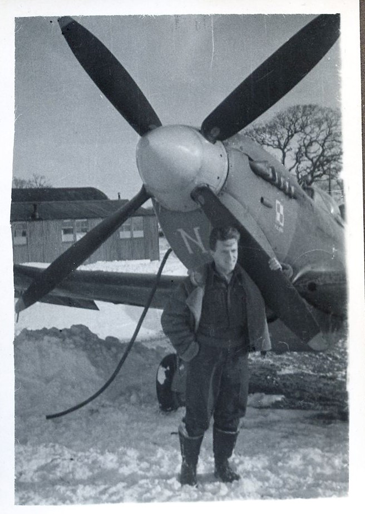
On 28th December 1944 (D + 205) Zenon was on another Armed Reconnaissance consisting of four Spitfires Mk IXF and led by Commanding Officer Squadron Leader B. H. Drobinski, D.F.C leading the Section. They took off at 10.30 and the other pilots were F/O S. Zdanowski and Sgt. L. Bisanz. Again they crossed at 10,000ft near Westhoofd and turned north towards The Hague and a building, which was their target. They straffed and successfully hit the target. They crossed the coast at The Hague and were met by accurate and intense heavy flak. The weather over the target was clear with Visibility up to 20 miles. They landed at 12.15. This was Zenon’s last operation for 1944. The 303 Squadron had completed 193.15 operational hours and 67.55 for training by day with no night flying. A Spitfire VB had clocked up 14.35 hours for training flights. The Squadron also welcomed to operational duties F/O J. Schandler and F/O J. Krok who had been transferred from 61 O.T.U Rednal.
1945
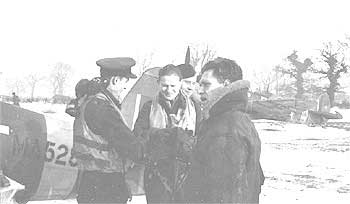
Coltishall (January 1945)
On 4th January 1945 (D + 212) Zenon’s Section was rostered for an Armed Reconnaissance consisting of four Spitfires Mk IXF and led by F/Lt. A. Malarowski. The section also consisted of F/Lt. S. Kleczkewski and F/Lt. E. Bartys. They took off at 11.25 and crossed the Dutch coast at Egmond at 12,000ft and turned south towards The Hague and pinpointed their target in the Hague – Huis Te Werve (?) area. They dived from 5,000ft and straffed the target from 1,500ft ‘off the deck’. No results were seen, however a contrail of a V2 was seen and reported by F/Lt. A. Malarowski at 12.31. First seen at 8,000ft and lost it at 20,000ft the Section continued with the patrol and reported a second contrail at 12.51 with the V2 appeared to have been fired from out to sea (fired from the islands off the Dutch coast). They also reported two aircraft N.E of The Hague. They returned to base out through Katwijk. They had been over the target area from 12.15 until 12.40. F/Lt. E. Bartys and P/O Z. Krzeptowski landed at Beccles in N. Suffolk for fuel and then returned to base between 15.10 and 16.10. Beccles was the nearest airfield to the coast and was used as a crash/ emergency site. The weather over the target area was 5/ 10 cumulus with base at 1,500ft and tops at 15,000ft with visibility for 5 miles.
On 5th January 1945 (D + 213) Zenon was rostered for an Armed Reconnaissance after doing aircraft flight test in the morning lasting 50 minutes. The Section consisted of four Spitfires Mk IXF and again led by F/Lt. A. Malarowski. They took off at 13.00 and the Section was made up with the same crew as the day before. They crossed the Dutch coast at Katwijk at 10,000ft and turned south towards The Hague to pin point targets in The Hague / Rust En Vreugt (?) area with pairs of aircraft strafing the target by dropping down from 6,000ft to 2,000ft with no results seen. They had been over the target from 13.40 until 13.55 and returned out over The Hague with the weather over the target being 2/ 10 cloud with cumulus base 3,000ft and tops 11,000ft and good visibility. They landed at 14.30.
On 7th January 1945 the non-operational pilots had been rostered for practicing bombing attacks. Zenon took off in MA588 at 15.10 with F/O S. Zdanowski and were back by15.50. Parts of the north Norfolk coast and Scroby Sands of Great Yarmouth were likely locations.
On 11th January 1945 Zenon was again on no-operational duties with formation flying from 10.35 until 11.45 and then ground firing from 16.15 until 16.55. The shift in training and practice indicated a change in role for the 303 Squadron as the War in Europe was changing due to the Russian winter offensive started in Poland.
On 14th January 1945 (D + 222) Zenon was rostered for an Armed and Weather Reconnaissance. The Section consisted of four Spitfires Mk IXF and led by F/Lt. T. Rzyski. The other pilots were Sgt. S. Magdziak and Sgt. A. Benski and they took off at 13.55 from Coltishall. Crossed the Dutch coast at 11,000ft above Westhoofd and then turned north towards The Hague and pin pointed target in The Hague/ Haagsche Bosch. They attacked through light to heavy flak from 5,000ft and pulled out at 1,000ft with strikes seen in wooded areas. They were over the target from 14.30 until 14.50 and left Holland at Katwijk. A V2 (Big Ben) contrail was reported by F/Lt. T. Rzyski at 14.50 from the area 60 miles east of The Hague at 10,000ft, but was lost in cloud. Also sighted aircraft over The Hague flying north at 10,000ft. The weather over the target had been 4/ 10 cloud with base at 1,000ft and tops 1,500ft with another layer 2/ 10 cloud at 20,000ft. Visibility was 10 miles and clear. The Section landed at 14.40.
On 15th January 1945 Zenon was on non-operational duties that consisted of some formation flying in the late morning and then air to ground firing practice. Each flight was around 45 minutes flying time. The next day there was no flying due to bad weather.
On 17th January 1945 (D + 225) Zenon was rostered for an Armed Reconnaissance and Attack after doing aircraft flight test in the morning lasting 50 minutes. The Section consisted of four Spitfires Mk IXF and led by F/Lt. A. Malarowski. The other members of the Section were Sgt. K. Sztuka and Sgt. J. Knicik. They took off at 11.00 and crossed the coast at Egmond at 10,000ft just above the 10/ 10 cloud. An aircraft was sighted flying at 10,000ft ten miles off the coast. They turned south to The Hague and then north. As they crossed the coast at Egmond they saw V2 contrails, which appeared to originate 40 miles inland from The Hague. They crossed the coast between Ijmuiden and The Hague. They landed at 12.45 without further incident. The weather over the target was 10/ 10 cloud and tops 6,000ft. The visibility was 10 miles. For the rest of the month there was no operational flying due to snow. The records show that to keep the ‘spirits up’ film shows and lectures were organized or training sessions on R/T to improve skills. The Squadron’s operational flying time was 96 hours and 92 training hours on IXF with an additional 5.15 hours on the VB.
On 3rd February 1945 (D + 242) the 303 Squadron were operational again with the weather clearing enough for the PAF to go back on duty. Blue, Green and Red Sections had been rostered for Escort Duties to a Halifax patrolling a line 51.15°N and 04.30°E and then 51.50°N and 05.40°E. This is a line roughly Antwerp to Nijmegan. Zenon’s Red Section took off at 13.20 led by F/O S. Zdanowski and landed at 17.21 without incident although the Blue Section saw V2 activity east of The Hague. The weather on the patrol line was 4/ 10 cloud with base at 2-3,000ft with tops at 4-5,000ft and visibility 10 miles. Although the full nature of the operation was not revealed, it appears to be an airborne observation / early warning patrol for V2 activity which was plaguing London at the time.
The next day Zenon was non-operational and did an aircraft test on MA528between 17.10 and 18.10. He went on leave until the 14th February while the rest of the operational Sections continued to hunt down V2 sites by providing escorts for USAF Mustangs on photoreconnaissance or providing fighter cover for stricken bombers back to East Anglia.
On 14th February 1945 (D + 243) Zenon was back on Armed Reconnaissance and Attack duty. Twelve Spitfires Mk IXF and led by Commanding Officer Squadron Leader B. H. Drobinski, D.F.C took off at 13.15 and crossed the Dutch coast just north of The Hague at 11,000ft. The target was pin pointed between The Hague and Rust en Vreugt (?) and bombed south to north from 3-4,000ft. 11 bursts were reported on target and another 9 in a cluster leaving two buildings left on fire covering the area in smoke. There had been moderate heavy and inaccurate flak over The Hague. One bomb was left hung up and then jettisoned in the sea on the return flight. They had been over the target area from 13.55 until 14.10 and landed at Ursel (halfway between Brugge and Ghent) in Belgium at 14.50. They refuelled and took off at 16.00 and were back at Coltishall 17.05. The weather over the target had been 10/ 10 cloud in patches and layers with base at 9,000ft with tops at 12,000ft and visibility 15 miles.
On 20th February 1945 (D + 259) Red, Black, Blue, Green, Yellow and White Sections had been rostered again for Escort Duties to a Halifax patrolling a line 51.15°N and 04.30°E and then 51.50°N and 05.40°E. Zenon led the Red Section in BS821and with him was F/O B. Zborowski in MN694. They took off at 11.40 and R/V at planned time and escorted the bomber. They landed at 14.30 without any problems. Blue and Yellow Sections had problems with sighting the bomber due to thick cloud and aborted. Black Section aborted due to engine trouble.
Next day Zenon was on non-operational duties and did an aircraft test on a Spitfire MK IXF No. SM339 between 15.20 and 16.00. He then went on leave until the beginning of March. During this period the Squadron continued seeking V2’s and also started carrying out special patrols to spot midget submarines in the North Sea shipping lanes.
On 1st March 1945 (D + 268) Zenon was back on duty. He was back on Armed Reconnaissance and Bombing Mission. Squadron Leader B. H. Drobinski, D.F.C, led seven Spitfires Mk IXF and one XVI. They took off at 14.45 and crossed the Dutch coast just north of The Hague. For this mission they each carried one 500lbs and one MC airburst bomb. Crossing the coast at 19,000ft they went straight to the target and bombed S.W to N.E in dives from 10,000ft and pulling out at 4,00ft. The intelligence report showed 5 bombs fell in target area along the road and 3 bombs fell 2-300 metres S.E of target near a lake. On leaving the target area at 15.20 and about 15 – 20 miles off the Dutch coast observed a V2 being fired from the hotel promenade area of The Hague. It left a trail 10 – 30,000ft with a cloud of dust marking the firing site. They had been subjected to medium light and inaccurate flak while over the target area. The weather had been cloud 5/ 10 at 4,000ft with excellent visibility. They landed in Ursel in Belgium at 16.30. They refuelled and took off for home at 17.20 and landed at Coltishall 18.30.
2nd March 1945 (D + 268) another Armed Reconnaissance and Bombing Mission. Four Spitfires Mk IXF led by W/O A. Rutecki took off at 12.40 and crossed the coast between The Hague and Katwijk at 10,000ft and flew straight to the target. They attacked in steep dives NE/ SW from 5,000ft down to 1,000 using cannon and machine guns. Turned inland and then climbed to 6,000ft and flew along the main road between The Hague and Gouda. There was a stationary electric train with three coaches containing troops. Two planes attached the train and about a dozen troops were seen to scatter and take cover with the mid coach on fire. The Section also attacked the power generation plant for the railway line by three aircraft and strikes were seen. They had been over the target area from 13.16 until 13.50. On leaving the area they crossed the coast at Katwijk and were subjected to moderate - light intense flak from the town with the odd burst of heavy flak. They saw 6 or 7 large barges facing out to see but did not attack. Weather conditions over the target had been clear and they landed back at Coltishall at 14.30.
On 3rd March 1945 (D +269) Zenon was rostered on an Armed Reconnaissance and Bombing Mission to Staalduine Bosch. Four Spitfires Mk IXF and led by F/O M. Maksymowicz were airborne at 09.00 from the base and crossed the Dutch coast at 09.30 between The Hague and Katwijk at 10,000ft and flew straight to the target. They observed black smoke rising from buildings SE of Haagsche Bosch rising to 8,000ft and stretching to Rotterdam with numerous other fires in buildings. They attacked their target from SE to NE by diving from 6,000ft down to 2,000ft with cannon and machinegun fire. Strikes seen in buildings in SE corner of wood and grey smoke rising to 50ft. One aircraft broke away and straffed the length of the wood. During the attack they were subjected to moderate to light inaccurate flak. They crossed the coast at Gravenzande at 4,000ft and reformed the formation out to sea. They landed at 10.40. Weather over the target had been clear with some mist.
On 5th March 1945 Zenon was again on an Armed Reconnaissance and Bombing Mission to Wassenhaar Rust en Vrevo. The Section comprised of Three Spitfires Mk IXF and One XVI flown by Zenon. F/Lt. E. Bartys led the Section and they took off at 12.15 from the base. Their landfall was not seen due to 10/ 10 cloud at 6,000ft and then climbed to 10,000ft for 10 minutes and then turned 180° and headed for home and landed at 15.45.
The next day Zenon was non-operational and flew the Spitfire Mk VB (No. AB272) with F/O J. Krok for bombing practice between 12.00 and 12.30.
On 6th March 1945 (D + 272) Zenon was assigned to Anti-Midget Submarine Patrols. Zenon led Red Section in a Spitfire IXF (No.MA674) with two other aircraft and they took off at 07.00 and returned at 07.10 due to R/T trouble.
On the 8th March he was on non-operational duty practicing Squadron formation flying (in an IXF No. MA674) between 10.35 and 11.55. His next operation was an Armed Reconnaissance over Katwijk and Den Helder on 11th March. The operation had almost nothing to report due to cloud and mist over the target.
On 18th March 1945 (D + 284) Zenon was rostered for an Armed Reconnaissance and Bombing near Haarlem in Holland. Four Spitfires Mk IXF took off at 08.25 and was led by F/Lt A. Malarowski with W/O A. Rutecki and F/O B. Zborowski. They crossed the coast at Katwijk at 09.17 at 6,000ft. They turned north towards Haarlem and lost height to get below the clouds at 5,000ft and saw no targets to attack. They then turned south and attacked target in a wood with cannon and machinegun fire with dives from 5,000ft down to 2,00ft by section. Strikes were seen in the wood, but no results seen. They flew out at 09.40 just north of The Hague and landed at 10.15. The planes were refuelled and rearmed for the nest mission within the day. Zenon then led an Armed Reconnaissance and Railway Bombing in the Leiden area. Zenon flying in an IXF (No. BS242) commanded the following pilots in the section: W/O A. Rutecki, F/Sgt. M. Michalak, F/Sgt. A. Benski and they took off at 13.55. They crossed the coast at 9,000ft at Katwijk and turned south to dive-bombed the railway line S.E of Leiden from 4,000ft. There was one direct hit and one fell the other side of the track with one bomb hitting and sinking a barge in the canal. They flew out over the coast at The Hague and followed the coast, then struck inland and landed at Ursel, landing at 15.30 to refuel and rearm. They took off at 17.25 and flew direct to the target at Rotterdam where they attacked the railway east to west by dive-bombing from 10,000ft pulling out at 4,000ft. There were two near misses and two fell to the right (north) of the target. They returned to base via Katwijk and landed at 18.30. Weather was recorded as clear with mist.
After a day’s rest, Zenon was placed on non-operational duty. He took off in BS549 at 14.30 until 15.10 for air to ground firing practice. On returning to base he switched planes for an aircraft test in BS242 and took off at 16.45 landing at 17.15.
On 21st March 1945 (D + 287) Zenon took off in MA420 at 13.30 for a Submarine Patrol accompanied by F/Sgt. J. Janicki. They searched various sectors under the guidance of the controller. Due to the pathway of 8/ 10 cloud with base 200 – 1,000ft they flew as low as 300ft in their search for the submarine. Nothing seen and the controller called them back to base landing at 17.00. On landing his plane was refuelled and scrambled to make up a Section of six Spitfires Mk IXF led by F/O S. Zdanowski on an Anti-Intruder Patrol. They flew out over the East Anglian coast at 12,000ft to cover 90 USAF Liberators crossing the coast at 10,000ft and then returned to base at 19.20.
On 23rd March 1945 (D + 289) Armed Reconnaissance duty resumed for Zenon. Four Spitfires Mk IXF led by F/Lt. E. Bartys were airborne at 08.55. Again they crossed the Dutch coast at 10,000ft at Katwijk and orbited the area east of Leiden, and then turned north as far as Hoorn, which was uneventful, and so turned south. Red Section led by P/O Z. Krzeptowski (Red 3) straffed a large lorry on the main road with cannon and machinegun fire with strikes seen and the lorry was disabled. They left the coast at Noordwijk with Red 4 (F/ Sgt. J. Kmiecik) being unable to jettison the drop tank. They landed at 11.20. The weather over the target area was no cloud and hazy.
On 25th March 1045 (D + 291) Zenon was again on Armed Reconnaissance and Railway Bombing near Utrecht. Squadron Leader B. H. Drobinski, D.F.C, led four Spitfires Mk IXF. The Section included W/O A. Rutecki and F/Sgt. J. Janicki. They took off at 14.30 and crossed the coast at Katwijk at 10,000ft and bombed a railway at E05.93° from east to west along the railway line by diving from 10,000ft to 3,000ft. Three direct hits and one near miss caused damage to the embankment. They flew down to Ursel and landed at 16.30. They refuelled and rearmed and took off at 17.15 with a direct flight at 10,000ft for Utrecht where they attacked the railway at E26.88°. They dived from 8,000ft and released their bombs at 2,000ft with one direct hit and three near misses causing damage to the embankment. The return flight took them out over Noordwijk and landed back at Coltishall 18.45. The weather over the target was cloud 10/ 10 at 10,000ft and misty.
On 27th March 1945 (D + 293) Armed Reconnaissance was the orders for the Section. Four Spitfires Mk IXF were led by F/ Lt M. Szelestowski and were airborne at 13.40. Zenon was again flying MA476. The other members of the Section were F/Sgt. Kmiecik and F/Sgt. K. Sztuka. They crossed the coast at Katwijk at 11,000ft and by now must have been very familiar with the topology below. They patrolled the main roads seeking German transport activity from Utrecht, Amsterdam, Haarlem and The Hague. Nothing sighted and crossed out over Noordwijk and landed at 15.50. Weather over the target was no cloud. The next day Zenon was on non-operational duty flying ML339 for formation flying. They took off at 15.35 and landed at 17.10.
On 30th March 1945 (D + 296) the Section were on Armed Reconnaissance. F/O S. Zdanowski led the Section. The other rostered pilots’ were F/O B. Zborowski and F/Sgt. K. Sztuka. Four Spitfires Mk IXF took off at 08.55 and crossed the Dutch coast at Noordwijk at 9,000ft. They bombed railway lines north to south diving from 7,000ft and releasing bombs at 3,000ft with all reported as near misses. They flew to Ursel and landed at 10.30. They rearmed and took off at 12.00 returning to the target, which was now covered by 10/ 10 cloud with the base at 3-4,000ft with top at 6,000ft. They attacked the railway at E73.97° from south to north. They crossed out over Katwijk and landed at 13.45. This was Zenon’s last active mission during the war and the Squadron finished operational flying at Coltishall with a pending move to Andrews Fields to start training on Mustangs. All aircraft were to be left at Coltishall and from 31st March until 3rd April the Squadron with the Servicing Echelon were busy packing.
On 3rd April the Squadron moved out of Coltishall with all personnel being moved to the train station at Buxton Lammas. The Squadron’s Servicing Echelon arrived at 15.35 on 3rd April with the move reported as going to plan. The Squadron received four Mustangs Mk.IV and training started on 5th April. With poor weather and a shortage of planes, it was not until the 9th April Zenon had his first solo flight in a Mustang IV (No.KM220) and took off at 17.20 and landed at 18.10. On a strict rota each pilot chalked up an hour and ten minutes each day flying local circuits, formation flying or sector reconnaissance.
By 20th April 1945 the Squadron had enough Sections ready with sufficient planes and hours for operational flying. On 25th April one section of eight Mustangs Mk IV flew on a Ramrod mission to Flensburg escorting 150 planes.
On 25th April 1945 ten Mustangs Mk IV were used to escort 250 Lancaster bombing the Berchesgaden, Hitler’s lair in the Alps. The operational plan was for the Mustangs to sweep to the south of the bombers. They took off at 07.00 and returned at 12.00. Those involved in the raid are listed below:-
S/Ldr. B. Drebinski
F/Lt J. Franckiewicz
F/Lt S. Kleczkowski
F/O T. Sikorski
F/Sgt. M. Michalak
F/O S. Zdanewaki
W/O W. Sznapka
W/O A. Rutecki
F/Lt E. Bartys
P/O Z. Newinski.
The intelligence reports show the bombing was accurate and very concentrated. The bombers formation was good, but very long making it more difficult to provide effective fighter cover. There was intense moderate flak and more medium flak over the target. One Lancaster was hit by flak over the target and no parachutes were seen or reported. At Erding aircraft were seen on the ground consisting of 15 JU 52, 12 Me 109’s and 20 – 30 unidentified aircraft. In the south and east of the airfield 2-3 jet fighters were reported. At another airfield more disabled aircraft with engines missing and one burning on the perimeter track was also reported. No ground attacks were carried out as the Section was under strict orders to keep to escort duties only. F/O T. Sikorski flew to airfield B86 to refuel and crash-landed when his undercarriage seized up.
Despite memories of former comrades, Zenon did not take part in the raid.
For the 303 Squadron, the war was over. For the rest of the month while they awaited their fete due to the Yalta Agreement, they continued to hone their flying skills including a flying display at Hethel in Norfolk and Beccles in Suffolk. On VE Day the logbook had the following entry:
VE Day- the day of the great victory over German Forces was announced by Mr Churchill today. The Hitler’s forces have been defeated by the Allies Forces and Europe has been liberated and become free again.
All personnel had been released from duty apart from a handful that covered essential duties. On 14th May 1946 they received instructions to return to Coltishall and on 16th May the planes flew direct and landed at 17.15 hours. For the rest of May and into August the Squadron flew locally practicing navigation, interception and air-to-air firing or formation flying. F/O J. Nicholls (Intelligence Officer) recorded how professional the Squadron remained even though there was no enemy left to fight.
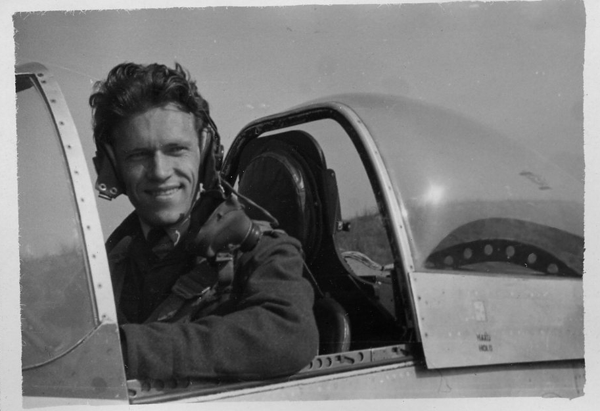
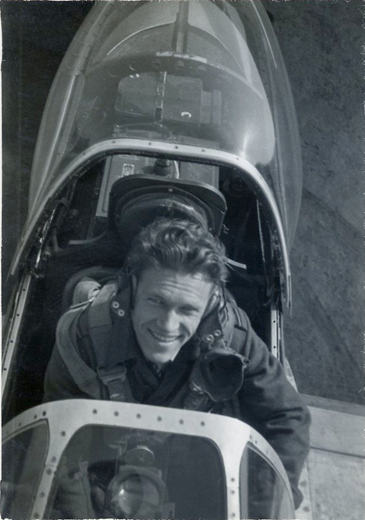
On 8th August 1945 303 Squadron moved back to Andrews Fields. Again, they continued to train and adjust to non-combat operations. On 20th August 1945 during a training exercise to escort bombers W/O Rutecki and F/Sgt. Magdziak were killed in a mid-air collision in poor visibility over Lickey End / Bromsgrove in Warwickshire. On the 26th August the Squadron escorted His Majesty’s ship the Queen Elizabeth into port.
On 31st August the 303 Squadron formed an Honorary Parade at 18.30 to commemorate all the pilots who lost their lives in the war as a mark of their fifth anniversary.
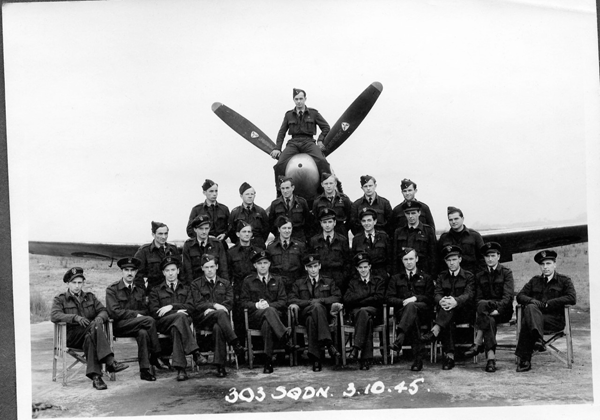
On 28th November 1945 303 moved to Turnhouse in Scotland. Poor weather conditions and snow kept the pilots more on the ground than in the air with the occasional local flight to Wick where they were eventually posted on 4th January 1946. The move also saw him promoted to Flight Lieutenant. For the Squadron, the Scottish posting was time filling before disbandment; however, they maintained their training and professionalism throughout this period including a short posting to Charter Hall. The following example indicates the level of training and the risks still facing them: a ground exercise and test went horribly wrong for F/O B. Zborowski (in KH868) who taxied into the Mustang Mk.IV piloted by F/Lt. Sikorski (744), neither pilot was injured.
On the 303 Squadron returned to Norfolk on 24th March 1946 and were stationed at Hethel which is now famous for the base of Lotus car manufacturing. The training in combat flying, interception, navigation, formation flying and aerobatics continued. On 26th November 1946 the Squadron received notice that flying by Polish Personnel must be cut down to a minimum (ref: BOR/TS/.389/P1) and they ceased flying on 29th November 1946 where any aircraft were to be maintained ‘sufficiently’ to be flown for decommissioning.
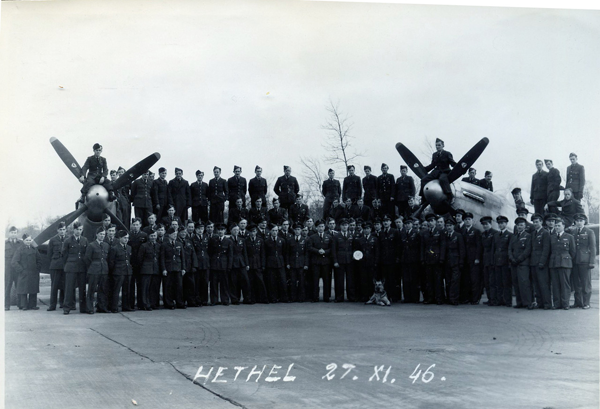
Zenon’s last flight with 303 Squadron was on 22nd November 1946 when he flew Mustang MIV (KM239) to Llendon in Wales for scrap. He loved the Mustang as a flying machine and the last flight must have been quite poignant.
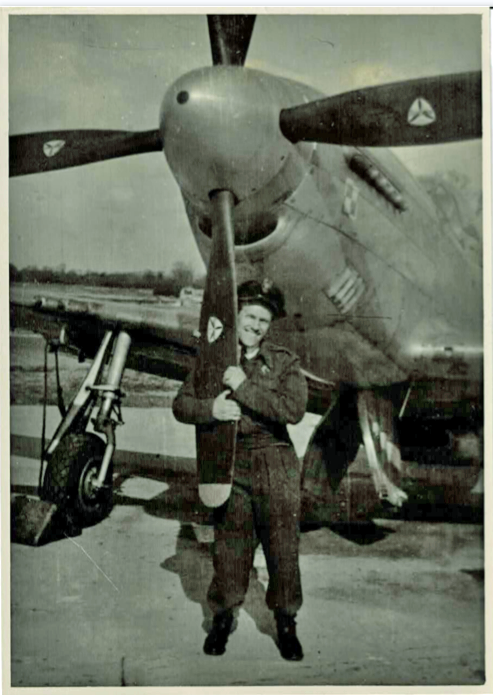
And the fate of the other beautiful Mustangs ?
On 29th November 1946 the following Mustang MkIV’s (No. KM112, KM237, KM115, KH754, KM226, KM186, KM297 and KM220) were flown to Lyneham and for disposal at the No.43 Group (Salvage) depot. On 11th December 1946 the 303 Squadron was disbanded.
On the 17th December 1946 Zenon was Commissioned into the service of the Polish Resettlement Corps and honourably discharged on 1st September 1948 in order to join the Royal Air Force.
Zenon was awarded the following medals:
| Polish: | Cross for Valour and Bar, Air Force Medal (PAF) |
| British: | 1939-45 Star, Africa Star, France and Germany Star, Defence Medal, The War Medal 1939 – 1945. |

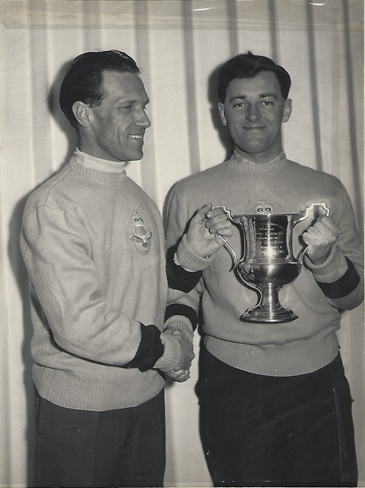
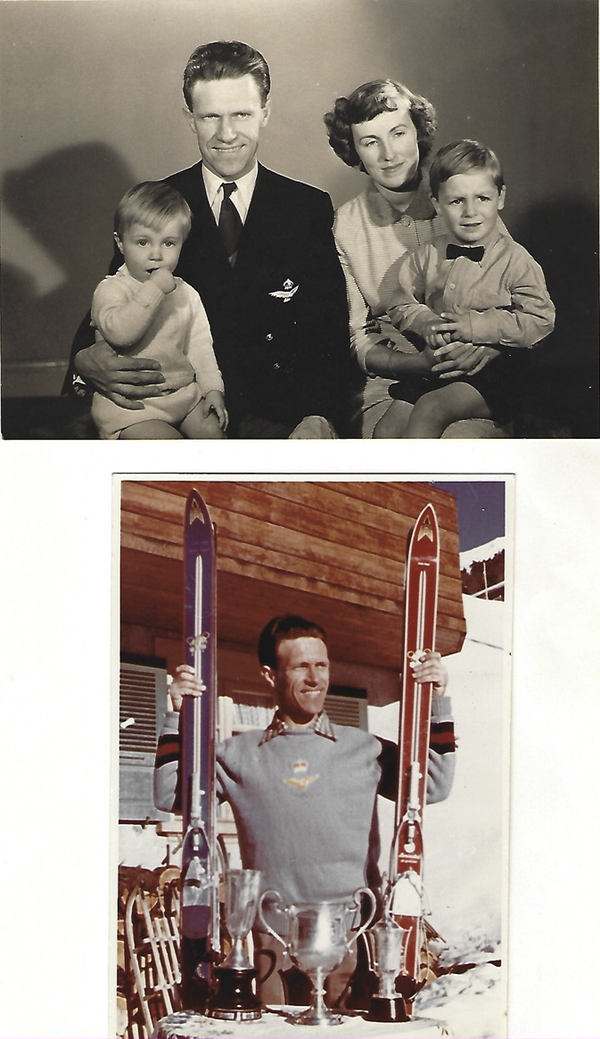
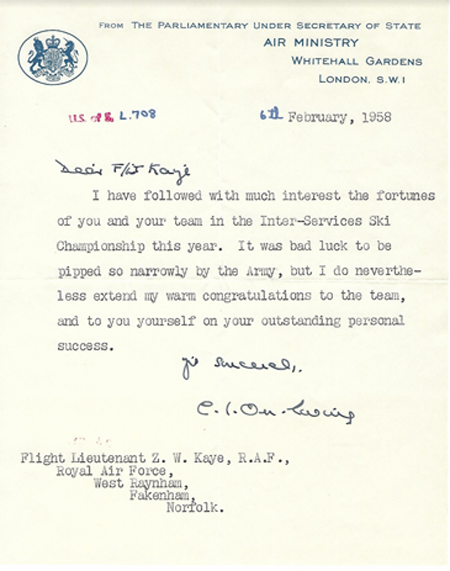
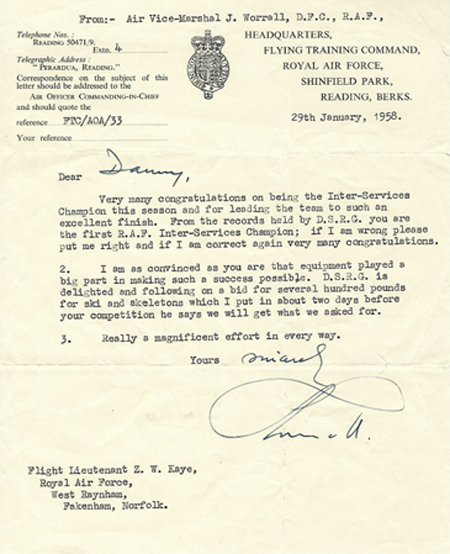
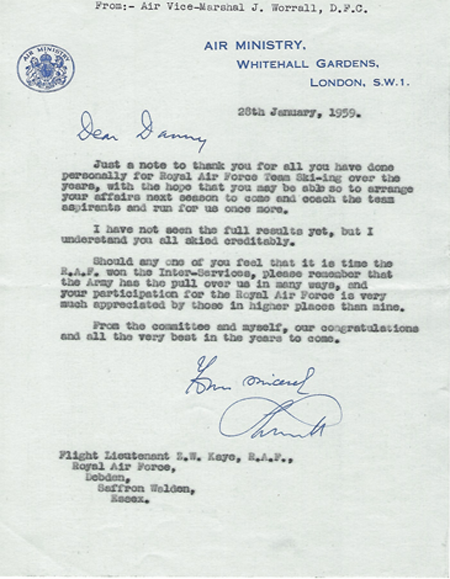
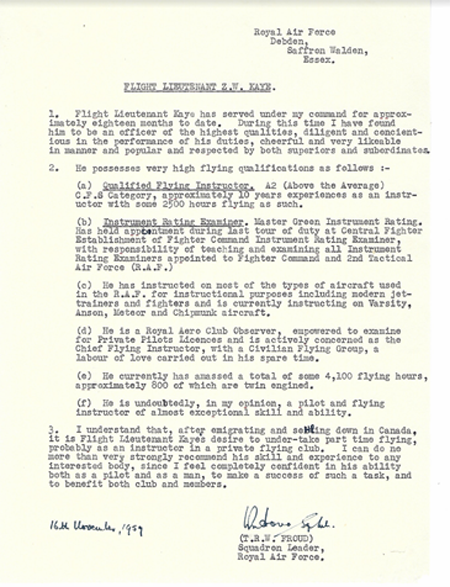
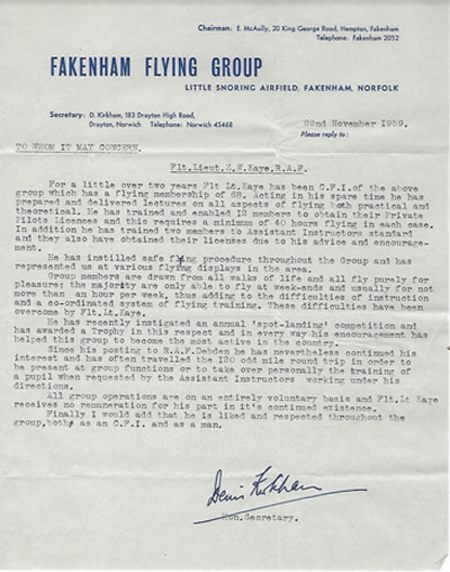
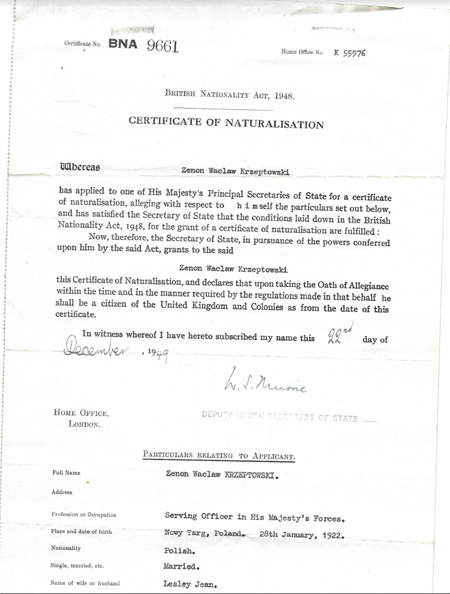
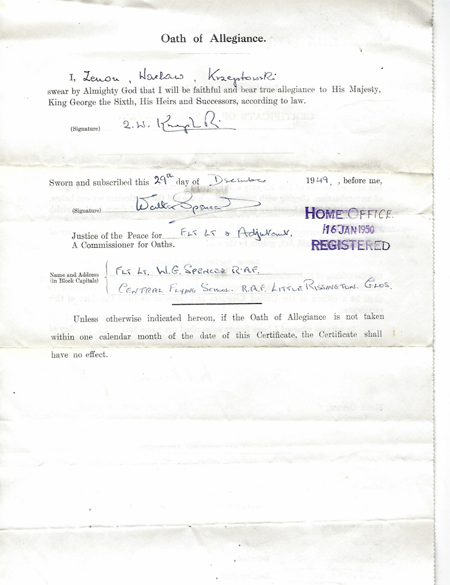
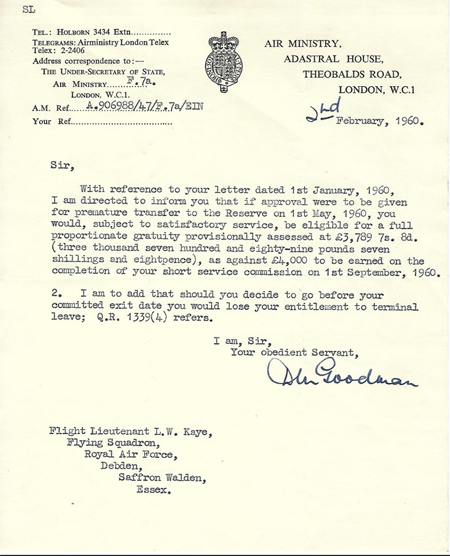
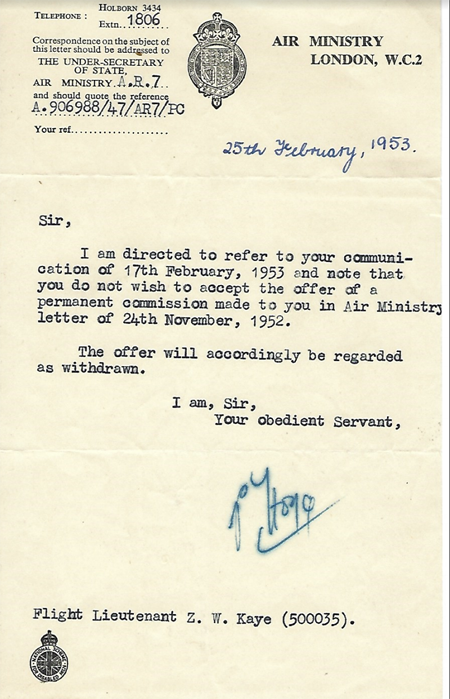
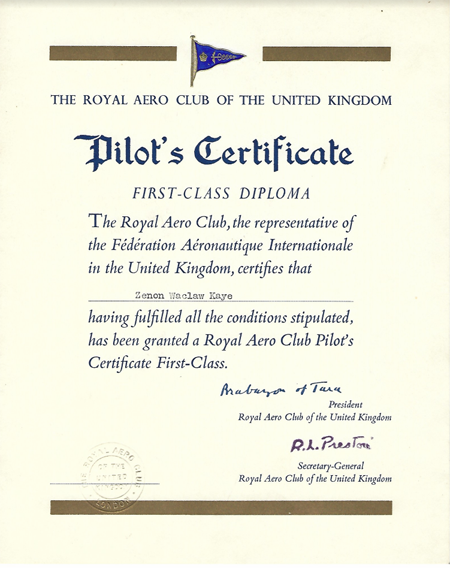
Site hosting by Paston.

